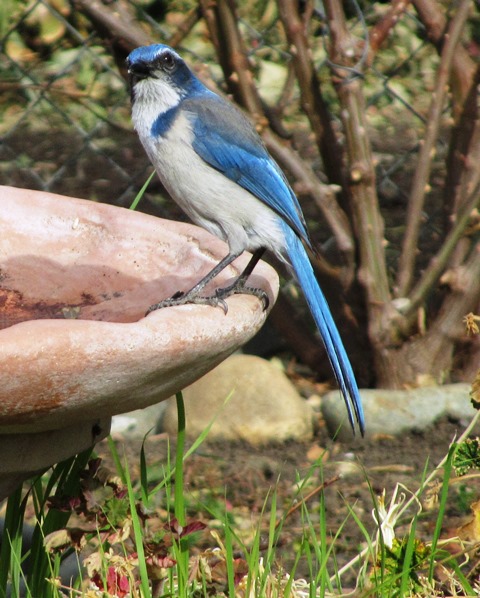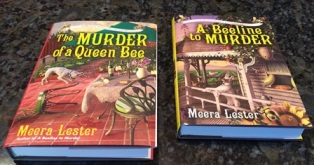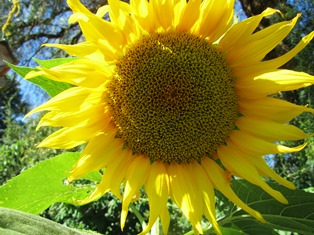Archive for August, 2016
The Murder of a Queen Bee–Reviews
I love it when the reviews start rolling in for one of my novels . . . in this case, THE MURDER OF A QUEEN BEE. Here’s a highlight of the Booklist review to be published in that magazine’s September 1, 2016 issue:
“Framed with details of beekeeping, herb growing, and living and working on a small farm in California, this charming cozy also includes well-drawn, engaging
characters and a promising new romance for Abby.”–Sue O’Brien
For more than a century, Booklist magazine has been and continues to be the go-to resource for American librarians (see, http://www.ala.org/offices/publishing/booklist/).
As libraries develop and evolve their collections of all types of library materials for virtually every genre and age group, they depend on reviews that Booklist provides. As an author, I appreciate having positive reviews from respected publications such as Booklist and Kirkus as well as other media in their respective platforms. As a cozy author, I also appreciate the exposure my novels get on blogging sites and other social media platforms.
* * *
Publisher’s Weekly, a major industry magazine that reviews books had this to say in its August 29, 2016 issue regarding THE MURDER OF A QUEEN BEE by Meera Lester (Kensington HC/October 2016/978-1-61773-913-2)
“Lester ticks all the boxes…This one is for lovers of cozy mysteries that are heavy on the cozy.” – Publishers Weekly
I’m also thrilled that Kirkus Review (see, https://www.kirkusreviews.com/), a valuable industry-firsts reviewing resource since 1933, has offered a review of my forthcoming novel, THE MURDER OF A QUEEN BEE that includes an excellent plot summary and this take-away quote about my protagonist ex-cop Abigail Mackenzie:
“Abby naturally finds it hard to concentrate on murder while she’s trying to decide what to do about Clay and her newfound attraction to Jack. The second from Lester (A Beeline To Murder, 2016) is long on romance, sweet tips, and honey recipes. . . . [and] mystery, too.”
The Murder of a Queen Bee, byLester, Meera
312 p. Kensington, hardcover, $25. (9781617739132)
E-book, $11.99. (9781617739149).
These novels are available through online retailers such as Amazon, Barnes & Noble, Kobo Books, and Walmart as well as from traditional bookstores everywhere.
See, http://tinyurl.com/hxy3s8q
Now available in mass market paperback, this debut novel launched the Henny Penny Farmette series of mysteries and sold out its first press run.
See, http://tinyurl.com/h4kou4g
The second cozy mystery in the Henny Penny Farmette series, available Sept. 27, 2016, is now available on Net Galley (netgalley.com) for professionals and readers who write reviews.
Birds that Eat Bees
Lately, I’ve noticed a scrub jay visiting my apiary. The bird most often lands on the bubbling water fountain near the front of the hives, but it visits other fountains in the yard as well. A favorite spot is the pink birdbath near the Pyracantha bush and stand of bamboo.
The bird eats its fill of bees corpses on the gravel path in front of the hives. Occasionally, I’ve seen it snatch a bee out of the air–something I don’t like. After washing down its meal with water, off it goes.

Western scrub jays are omnivores and eat nuts, seeds, berries, small rodents, reptiles, other birds’ eggs, and insects.
While bees aren’t the primary dietary food of scrub jays, the birds will eat bees that are dead or alive.
Purple Martins, the largest type of swallow in the United States, eats bees in flight, too, provided the insects zoom high enough to enter the Purple Martin’s flight zone.
Other birds that eat bees include flycatchers, tufted titmice, swifts, and shrikes (because of their feeding habits, some shrikes are known as “butcher birds” because they impale prey on thorns). European beekeepers must deal with Bradfield’s swift and the Green Bee-eater; both eat bees that are flying about to forage or mate.
The majority of bee-eating birds belong to a relatively small group of twenty-four species that feed mainly on honeybees but also devour bumblebees, dragonflies, wasps, ants, butterflies, hornets, beetles, and moths as part of their diets.
But back to the scrub jay–these birds serve a custodial function for my apiary. With dead bees attracting hornets and yellow jackets, the scrub jay is doing me a favor by cleaning up around the hive entrances. This is especially true in the autumn, when the worker bees preparing their hive for winter, push out the drones (male honeybees) to die.
* * *
If you enjoy reading about farmette topics (including gardening, beekeeping, and delicious recipes), check out my cozy mysteries A BEELINE TO MURDER and also THE MURDER OF A QUEEN BEE in the Henny Penny Farmette series (from Kensington Publishing).
These novels are available through online retailers such as Amazon, Barnes & Noble, Kobo Books, and Walmart as well as from traditional bookstores everywhere.
See, http://tinyurl.com/hxy3s8q
Now available in mass market paperback, this debut novel launched the Henny Penny Farmette series of mysteries and sold out its first press run.
See, http://tinyurl.com/h4kou4g
The second cozy mystery in the Henny Penny Farmette series, available Sept. 27, 2016, is now available on Net Galley (netgalley.com) for professionals and readers who write reviews.
Giant Sunflowers Brighten a Garden, Cornfield, or Wall
Ralph Waldo Emerson once observed, “The earth laughs in flowers.” Among the many flowers I plant around the Henny Penny Farmette each year, sunflowers are my favorites.
What’s not to love about these gorgeous beauties that inspired master artists like Van Gogh, Monet, and Gauguin as well as farmers like my grandmother who put them in fruit jars and crockery to brighten the rooms of her Missouri farmhouse?
I like to grow smaller ones at the back of a flower bed and the giant ones against walls or at the back of my patch of summer corn.

These sunflowers stand about 12 feet tall and produce several heads. Heritage varieties produce several heads.
Giant sunflowers need space to grow to full size since they will grow well over six feet. In my garden, they tower over the corn. Bees love them for their pollen. Kids love them when the foliage of the plants create a secret fort or a fairy circle. Humans, birds, and squirrels love them for their seeds.
For best results, plant giant sunflowers at the back of a garden. They need good soil and full sun. Plant when the danger of frost has past. A rule of thumb to follow is to plant them about one inch deep and six inches apart. While the seeds are germinating, keep the soil moist.
Later on, when the plants stand about three inches tall, you can thin them. Leave about one foot between each plant. This enables a strong root system for form. The stalks will become sturdy and measure about three to four inches in circumference when fully grown.
First come the gorgeous petals in green to yellow and then bright yellow. As the bees pollinate the florets and they drop, the seeds will mature. Seeds are either gray or brown in color.
I always cut the heads when the seeds are plump, firm, and begin to drop. I let the heads dry well in the sun for days before I remove the seeds. Fully dry seeds can be stored in containers for human consumption or to be fed to the squirrels and birds. Don’t forget to save some for planting in next year’s garden.
* * *
If you enjoy reading about farmette topics (including gardening, beekeeping, and delicious recipes), check out my cozy mysteries A BEELINE TO MURDER and also THE MURDER OF A QUEEN BEE in the Henny Penny Farmette series (from Kensington Publishing).
These novels are available through online retailers such as Amazon, Barnes & Noble, Kobo Books, and Walmart as well as from traditional bookstores everywhere.
See, http://tinyurl.com/hxy3s8q
Now available in mass market paperback, this debut novel launched the Henny Penny Farmette series of mysteries and sold out its first press run.
See, http://tinyurl.com/h4kou4g
The second cozy mystery in the Henny Penny Farmette series, available Sept. 27, 2016, is now available on Net Galley (netgalley.com) for professionals and readers who write reviews.
 Facebook
Facebook Goodreads
Goodreads LinkedIn
LinkedIn Meera Lester
Meera Lester Twitter
Twitter









